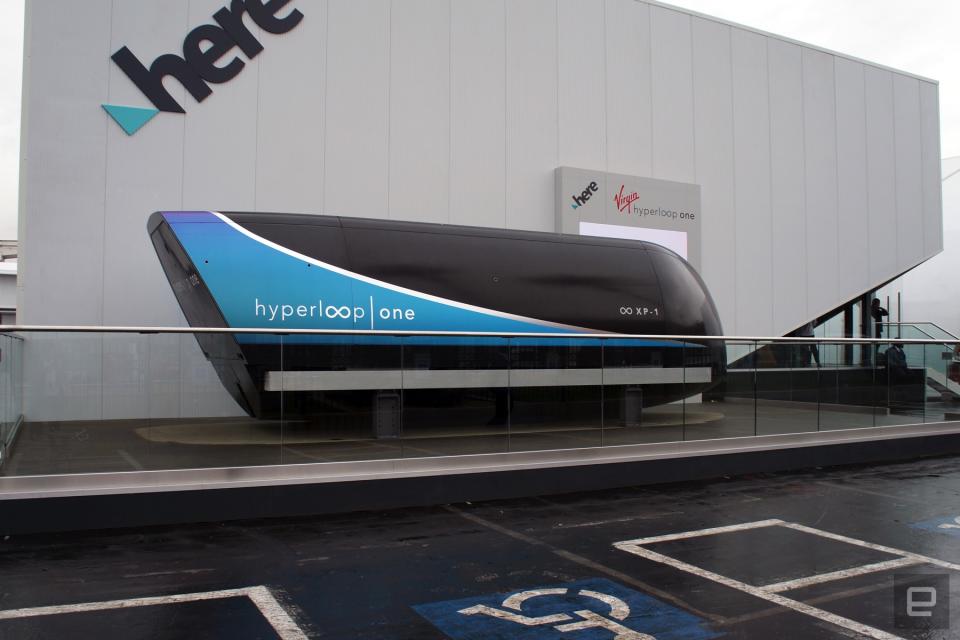A closer look at the Hyperloop One test pod
The future of transportation will live on your smartphone.
Here at CES, Virgin Hyperloop One is showing off a new partnership with mapping company Here, and we sat down with the company's Matt Jones to explore it further. He, alongside Dr. Anita Sengupta, talked us through the app in greater detail, but there was an additional surprise in store. The company has dragged its XP-1 test pod from the Nevada desert to the show in order to let the public gaze upon it for the first time.
The app, as we explained before, is the product of a partnership between Here and Hyperloop One, and about demonstrating how navigation will look like in the future. Users will be able to download the platform and use it as a way of learning how their journeys would look should the Hyperloops be built. But more importantly, the app also demonstrates the company's commitment to integrate its technology into the public transport that surrounds it.
It's also something of a pragmatic move, given the lofty concepts that Hyperloop One was throwing around back in 2016. Then, it created concept videos of users catching self-driving cubes from Abu Dhabi to Dubai that dropped them off at their destination. Now, the company is taking a more pragmatic turn, preferring to leave the journeys to and from its stations — the "last mile" in transportation speak, to other people. That will involve public transport companies, ride-sharing outfits like Uber and Lyft, as well as bike-sharing and walking.
That's where the app comes in, which can calculate a journey to the minute; scheduling, for instance, a Lyft to take you to the station, and to have one waiting for you at the other end. And this level of data crunching is something that the outfit is hoping will have a positive impact on the customer experience in the future. Not to mention that users can also use it as a one-stop-shop for transit directions normally, and the company will use all of the data it collects to further improve the customer experience.

Jones also spoke about the lack of a desire for this app to become the dominant transport app across the globe. Instead, the hope is that a small number of people will operate as testers who can lead others into the coming conversation. It also signals a willingness for Virgin Hyperloop One to be more customer-facing, reversing a policy whereby the company would take a step back when it came time to build a real-world platform.
The team also made the point that the proposed Hyperloop speeds in the app would be the ones users can expect in the real world. The system has been built to anticipate the real-world journey times a theoretical tube from Las Vegas to LA would require, even incorporating the turns and terrain that could force the pod to slow down. And that the app would be working overtime to ensure that as soon as you "land," a ride will be waiting for you.
As for the pod itself, it looks a little bit more like a minivan than you may expect, and it's smaller than it appears on video. The wide, flat front that dimples to a point puts you in mind of an old LNER Class A4 train, the sort that steamed across the UK in the late 1930s. It's narrower, too, and should this size become the standard — a fact that Dr. Sengupta points out is still yet to be decided — then you'd probably only be able to sit two a row.
But there's something quite heartening to see how committed the Hyperloop One team are to hitting the proposed goal of a passenger loop by 2021. Squeeze or not, it's going to be interesting to see if we can start zooming around in tubes in just three years.
Click here to catch up on the latest news from CES 2018.


















